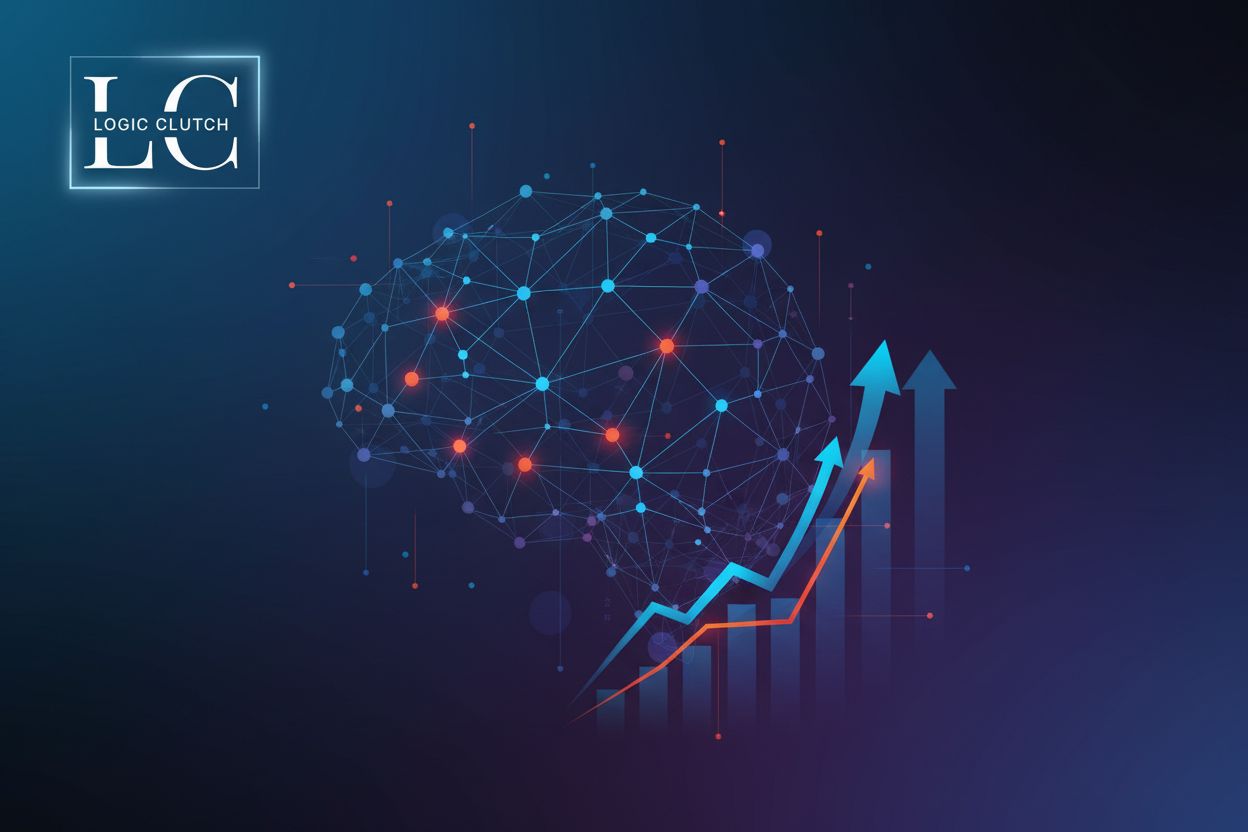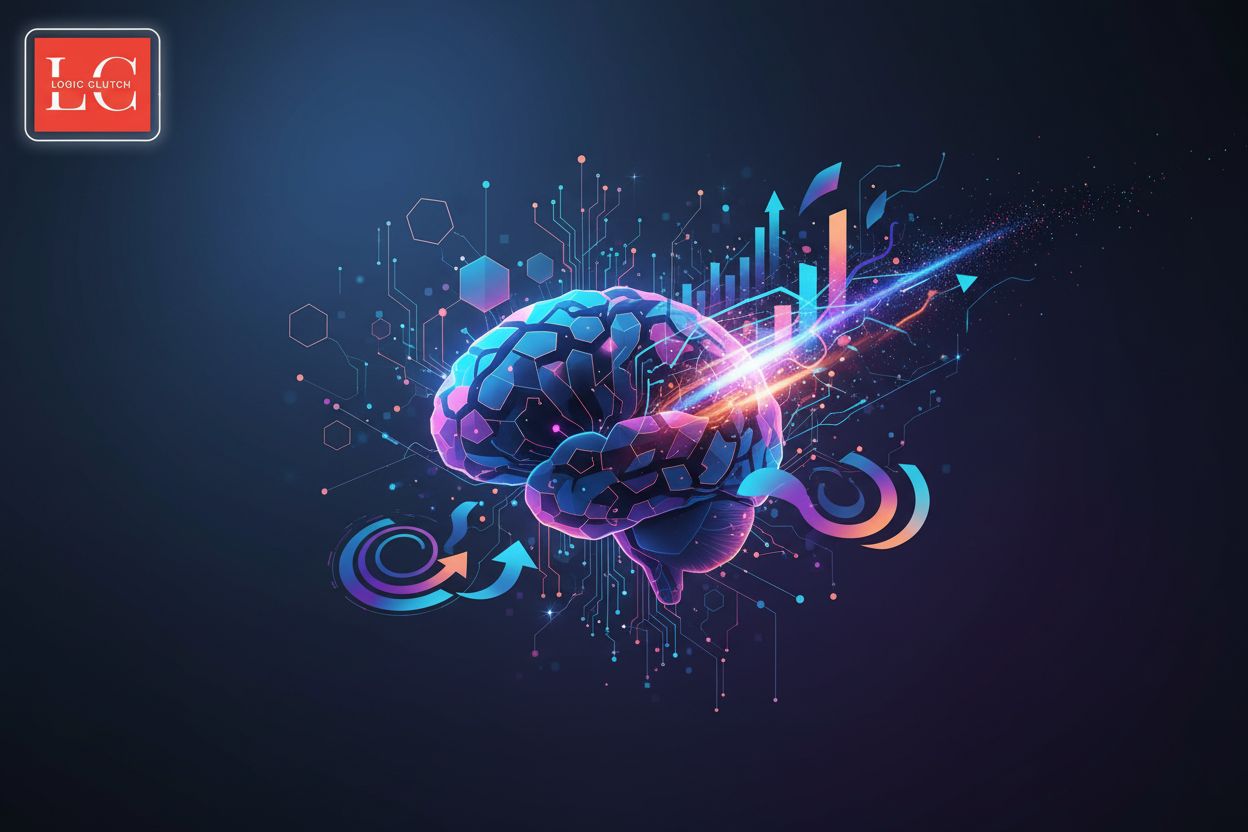35 Must-Know Topics Revolutionizing Enterprise Tech: A Logic Clutch Perspective
TL;DR
I. Modern Data Management: The Foundation for Intelligent Enterprises
Imagine a world where every business decision is backed by accurate, real-time data. Modern data management makes that vision a reality. It’s the backbone of any intelligent enterprise, and it’s rapidly evolving.
Here's what you need to know:
Master Data Management (MDM): MDM ensures a single, consistent view of critical data entities, like customers, products, and locations. Think of a healthcare provider using MDM to maintain accurate patient records across different departments, reducing errors and improving care coordination. For a financial institution, MDM can provide a unified view of customer data for regulatory compliance and personalized service.
Data Quality and Cleansing: Garbage in, garbage out. High-quality data is essential for reliable insights. Data cleansing involves identifying and correcting errors, inconsistencies, and redundancies. For example, a retail company might use data cleansing to standardize product names and descriptions, improving search accuracy and customer experience.
Data Integration: Siloed data is a major obstacle. Data integration strategies combine data from different sources into a unified view.
- ETL (Extract, Transform, Load)
- ELT (Extract, Load, Transform)
- API (Application Programming Interface)
Choosing the right approach depends on your specific needs and infrastructure.
Data Governance: This establishes policies and procedures for managing data assets. It encompasses data quality, security, and compliance. Strong data governance is crucial for adhering to regulations like GDPR and CCPA.
Data Catalogs: Data catalogs create an inventory of available data assets, making it easier for users to discover and understand data. This promotes data literacy and empowers users to make data-driven decisions.
Consider a large e-commerce platform. By implementing modern data management practices, they can:
- Improve customer segmentation and personalize marketing campaigns.
- Optimize supply chain operations by tracking inventory levels in real-time.
- Detect and prevent fraudulent transactions more effectively.
These capabilities translate directly into increased revenue, reduced costs, and improved customer satisfaction.
As businesses generate more data, effective data management becomes even more critical. Next, we'll explore the first key component: Master Data Management (MDM) in the modern era.
II. Salesforce CRM Solutions: Driving Customer Success
Is your sales team struggling to keep up with customer demands? Salesforce CRM solutions can transform how you engage with customers and drive business growth.
Salesforce Sales Cloud offers a robust set of features designed to streamline sales processes and improve overall performance. Key benefits include:
- Lead Management and Opportunity Tracking: Effectively manage leads from initial contact to conversion. Track opportunities, monitor progress, and identify potential roadblocks to close deals faster.
- Salesforce Automation: Automate repetitive tasks such as data entry, follow-up emails, and report generation. This frees up sales reps to focus on building relationships and closing deals.
- Customizable Dashboards and Reporting: Gain real-time insights into sales performance with customizable dashboards and reports. Monitor key metrics, identify trends, and make data-driven decisions to optimize sales strategies.
Salesforce Service Cloud empowers businesses to deliver exceptional customer service experiences. Consider these features:
- Case Management: Streamline the resolution of customer issues with efficient case management tools. Route cases to the appropriate agents, track progress, and ensure timely resolution.
- Knowledge Base: Provide self-service support options with a comprehensive knowledge base. Empower customers to find answers to their questions quickly and easily, reducing the burden on support teams.
- Omnichannel Support: Connect with customers across multiple channels, including phone, email, chat, and social media. Provide a seamless and consistent customer experience regardless of the channel they choose.
Salesforce Marketing Cloud enables businesses to create personalized marketing campaigns that resonate with customers.
- Email Marketing and Automation: Create targeted email campaigns based on customer data and behavior. Automate email workflows to nurture leads, engage customers, and drive conversions.
- Customer Journey Mapping: Visualize the customer journey and identify opportunities to personalize interactions at each touchpoint. Create tailored experiences that drive engagement and loyalty.
- Data-Driven Segmentation: Segment your audience based on demographics, interests, and purchase history. Deliver targeted messages that resonate with each segment, increasing the effectiveness of your marketing efforts.
Salesforce provides powerful analytics tools to help businesses gain insights from their CRM data.
- Reporting and Dashboards: Create custom reports and dashboards to track key metrics and monitor performance. Gain a comprehensive view of your business and identify areas for improvement.
- Predictive Analytics: Leverage AI-powered predictive analytics to forecast future trends and anticipate customer needs. Make proactive decisions to optimize sales, marketing, and service strategies.
By understanding these core components of Salesforce CRM, businesses can unlock new levels of customer success. Next, we'll explore how to customize Salesforce for unique business needs.
III. AI-Powered Solutions: Transforming Business Operations
Imagine a world where machines "see" and interpret images as accurately as humans. Computer Vision AI is rapidly turning this vision into reality, opening up transformative possibilities for businesses.
Computer Vision AI empowers computers to extract meaningful information from digital images, videos, and other visual inputs. It uses image recognition and object detection to identify and classify items within an image.
Here are key aspects of Computer Vision AI:
Image Recognition and Object Detection: This is the core function, enabling machines to identify objects, people, and places within images. For instance, it can detect defects on a production line or identify different types of crops in agricultural fields.
Applications Across Industries: Computer Vision AI is transforming various sectors. In manufacturing, it automates quality control by identifying defects in products. In healthcare, it assists in medical image analysis, helping doctors detect diseases earlier and more accurately. The retail industry uses it for enhanced customer experiences, such as automated checkout systems and personalized recommendations based on visual searches.
In healthcare, Computer Vision AI analyzes medical images like X-rays and MRIs to detect anomalies that might be missed by the human eye, leading to earlier diagnoses and better patient outcomes. For example, algorithms can be trained to identify subtle indicators of tumors or fractures with high accuracy.
Consider a manufacturing plant using Computer Vision AI to inspect products on an assembly line. Cameras capture images of each item, and the AI system identifies any defects, such as scratches or missing parts. This allows for real-time quality control and reduces the risk of faulty products reaching consumers.
LogicClutch helps organizations harness the power of Computer Vision AI by developing tailored solutions that address specific business challenges. These solutions can range from automating visual inspection processes to creating intelligent surveillance systems.
Next, we'll delve into how AI-driven automation increases efficiency.
IV. Custom Development and Emerging Technologies
Is your business being held back by generic, one-size-fits-all software? Custom development and emerging technologies offer a path to tailored solutions that drive innovation and efficiency.
Tailoring solutions to specific business needs: Custom software development means building applications precisely aligned with your unique workflows, data structures, and business goals. This contrasts with off-the-shelf software, which often requires businesses to adapt their processes to fit the software's limitations.
Advantages over off-the-shelf software: Pre-built solutions often come with unnecessary features, leading to complexity and wasted resources. Custom software eliminates this bloat, providing only the functionality you need. It also offers greater flexibility to adapt to changing business requirements and integrate with existing systems.
LogicClutch's Custom Development services: LogicClutch specializes in crafting custom software solutions that address specific business challenges. We work closely with clients to understand their needs and develop scalable, maintainable applications that deliver tangible results.
Microservices architecture: Cloud-native applications are often built using a microservices architecture, where the application is broken down into small, independent services that can be developed, deployed, and scaled independently. This approach enables greater agility and resilience.
Containerization with Docker and Kubernetes: Docker packages software into standardized units called containers, which include everything needed to run the application. Kubernetes automates the deployment, scaling, and management of these containers.
DevOps practices: Cloud-native development embraces DevOps principles, emphasizing collaboration between development and operations teams. This leads to faster release cycles, improved reliability, and better alignment with business goals.
Benefits of low-code/no-code: These platforms allow users to build applications with minimal or no coding, using visual interfaces and pre-built components. This accelerates development, reduces costs, and empowers non-technical users to participate in the development process.
Citizen developers: Low-code/no-code platforms enable "citizen developers" – business users with limited coding experience – to create applications that solve specific problems within their departments. This democratizes development and reduces the burden on IT teams.
Use cases and limitations: These platforms are well-suited for building simple applications, automating workflows, and creating prototypes. However, they may not be appropriate for complex, mission-critical applications that require extensive customization and scalability.
Next, we'll explore how bringing processing closer to the data with edge computing can transform business operations.
V. On-Demand Development and Resource Augmentation
Are you struggling to find the right talent for a critical project? On-demand development and resource augmentation provide the flexibility to scale your team and access specialized skills when you need them most.
Flexibility and scalability: On-demand development lets you quickly adjust your team size based on project needs. This is particularly useful for projects with fluctuating workloads or tight deadlines. Imagine a retail company ramping up its development team to handle increased traffic during the holiday season, then scaling down afterward.
Access to specialized skills: Gain access to niche expertise without the cost of hiring full-time employees. For example, a healthcare startup might need a specialist in HIPAA-compliant data handling for a specific project.
LogicClutch's On-Demand Development services: LogicClutch offers a curated pool of skilled developers ready to integrate into your existing teams. We ensure seamless collaboration and knowledge transfer.
Identifying skill gaps: Pinpoint the specific skills missing in your current team. A financial institution might realize they need expertise in blockchain technology for a new project.
Finding the right talent: Source developers with the precise skills and experience required. This could involve leveraging freelance platforms, specialized agencies, or LogicClutch's network.
Managing augmented teams: Implement clear communication channels and project management processes to ensure augmented team members integrate smoothly.
Establish key performance indicators (KPIs) to track the impact of resource augmentation. Monitor project progress and evaluate the effect on overall business results.
Next, we'll explore how to ensure seamless integration with your existing teams.
VI. Best Practices for Enterprise Technology Implementation
Implementing new enterprise technology can be daunting. However, with the right strategies, you can ensure a smooth and successful transition.
Here are key best practices to consider:
- Agile Development Methodologies: Embrace an iterative approach with frameworks like Scrum and Kanban. This allows for flexibility and continuous improvement throughout the development process. Scrum focuses on short sprints and daily stand-ups, while Kanban emphasizes visualizing workflow and limiting work in progress.
- DevOps Principles and Practices: Foster collaboration between development and operations teams. Automation is key, streamlining processes from code integration to deployment. Continuous monitoring helps identify and resolve issues quickly, ensuring system reliability.
- Cybersecurity Best Practices for Enterprise Systems: Implement robust security measures to protect sensitive data. Data encryption safeguards information during transmission and storage. Access control restricts unauthorized access to systems and data. Proactive threat detection and response mechanisms are vital for mitigating potential security breaches.
- Change Management Strategies for Technology Adoption: Effective communication and training are essential for user adoption. Engage stakeholders early and address any resistance to change. Clearly articulate the benefits of the new technology and provide adequate support to users.
Migrating to the cloud requires careful planning.
- Consider different migration approaches such as lift and shift, re-platform, or re-architect, depending on your specific needs.
- Choose the right cloud provider that aligns with your business requirements and budget.
- Implement strategies for cost optimization to maximize the value of your cloud investment.
Consider a large hospital implementing a new Electronic Health Record (EHR) system. By following these best practices, they can ensure a smooth transition, minimize disruptions to patient care, and maximize the benefits of the new technology.
By focusing on these key areas, organizations can increase their chances of a successful enterprise technology implementation. Next, we will explore the crucial aspects of Agile Development Methodologies.
VII. Future Trends in Enterprise Technology
The pace of technological change is accelerating, and businesses must stay ahead to remain competitive. Let's explore some future trends poised to revolutionize enterprise technology.
Quantum Computing: Quantum computing could transform industries like drug discovery and financial modeling. Its ability to solve complex problems faster than classical computers opens new possibilities. However, quantum computing faces challenges, including hardware development and algorithm design.
The Metaverse and Business: The metaverse offers immersive experiences using virtual and augmented reality. Businesses can explore new business models, like virtual storefronts and immersive training programs. Engaging customers through virtual experiences creates unique opportunities.
Sustainable Technology Practices: Reducing carbon footprint is now a business imperative. Energy-efficient hardware and software are essential. Responsible disposal of electronic waste minimizes environmental impact.
The Convergence of AI and IoT: Smart devices and sensors generate vast amounts of data. AI algorithms analyze this data to provide insights and enable automation. Industries like manufacturing and logistics benefit from AI-powered IoT solutions.
Serverless Computing: Serverless computing allows developers to focus on code without managing servers. It offers scalability and cost efficiency through event-driven architecture. Businesses can use serverless for tasks like data processing and API management.
Imagine a retail company using AI and IoT to optimize energy consumption in its stores. Smart sensors monitor temperature and lighting, while AI algorithms adjust settings to minimize energy waste.
As these trends mature, they will reshape enterprise technology. Organizations that embrace these innovations will gain a competitive edge. LogicClutch remains committed to helping businesses navigate this evolving landscape and implement cutting-edge solutions.








